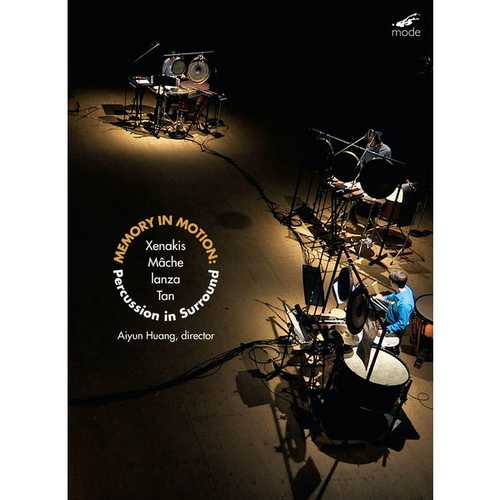
Performer: Music in Motion Ensemble, Aiyun Huang
Format: FLAC (tracks)
Label: Mode Records
Release: 2021
Size: 313 MB
Recovery: +3%
Scan: cover
01. Mâche: Aera, Op. 36
02. Lanza: Sensors VI
03. Tan: Sorites
04. Lanza: Mnais mnemes
05. Xenakis: Persephassa
“Memory in Motion: Percussion in Surround” was a research project developed to examine how percussionists memorize musical actions within ensembles. As part of this research, director Aiyun Huang commissioned new works to compliment selected existing repertoire. Zihua Tan wrote Sorites to compliment Iannis Xenakis’ Persephassa and alcides lanza wrote “mnais mnemes” to compliment his own earlier composition sensor VI”. In both cases, the composers were asked to use the identical setup and notational system as that of the existing works. By sharing this common DNA, these unique compositions synergistically flow together to form an unusually powerful listening experience. Persephassa is a classic of the percussion repertoire for 6 spatialized percussionists surrounding the audience. This, along with Tan’s Sorites make for extraordinary listening in surround, with the listener placed in the center of the circular ensemble as acoustic sounds often ricochet or spin around the listener. The recording on this Mode release accurately places each percussionist in the soundstage (in the stereo version as well as the surround). Mâche’s Aera is also for 6 percussionists. Using tuned gongs, vibraphones, marimbas, tubular bells, and timpani as the main colors in this 20-minute work, Mâche directs our ears to hear the inner resonance of these instruments and how the timbres and harmonies mingle and evolve when combinations of instruments shift. Lanza’s two works are scored for percussion quartet. sensor VI was inspired by the first moon-landing by the Apollo astronauts in 1969. Lanza chose to reference the devices that sensed and transmitted the astronauts’ life-signs through space to technicians on the ground, and the relation these instruments have to the body’s sense organs. His “mnais mnemes” draws formal and textural inspiration from freely-derived characteristics of the mnais mneme, a unique dragonfly found in China — its very elongated cylindrical body contrasts strongly with its large head and enormous glassy spherical eyes.



